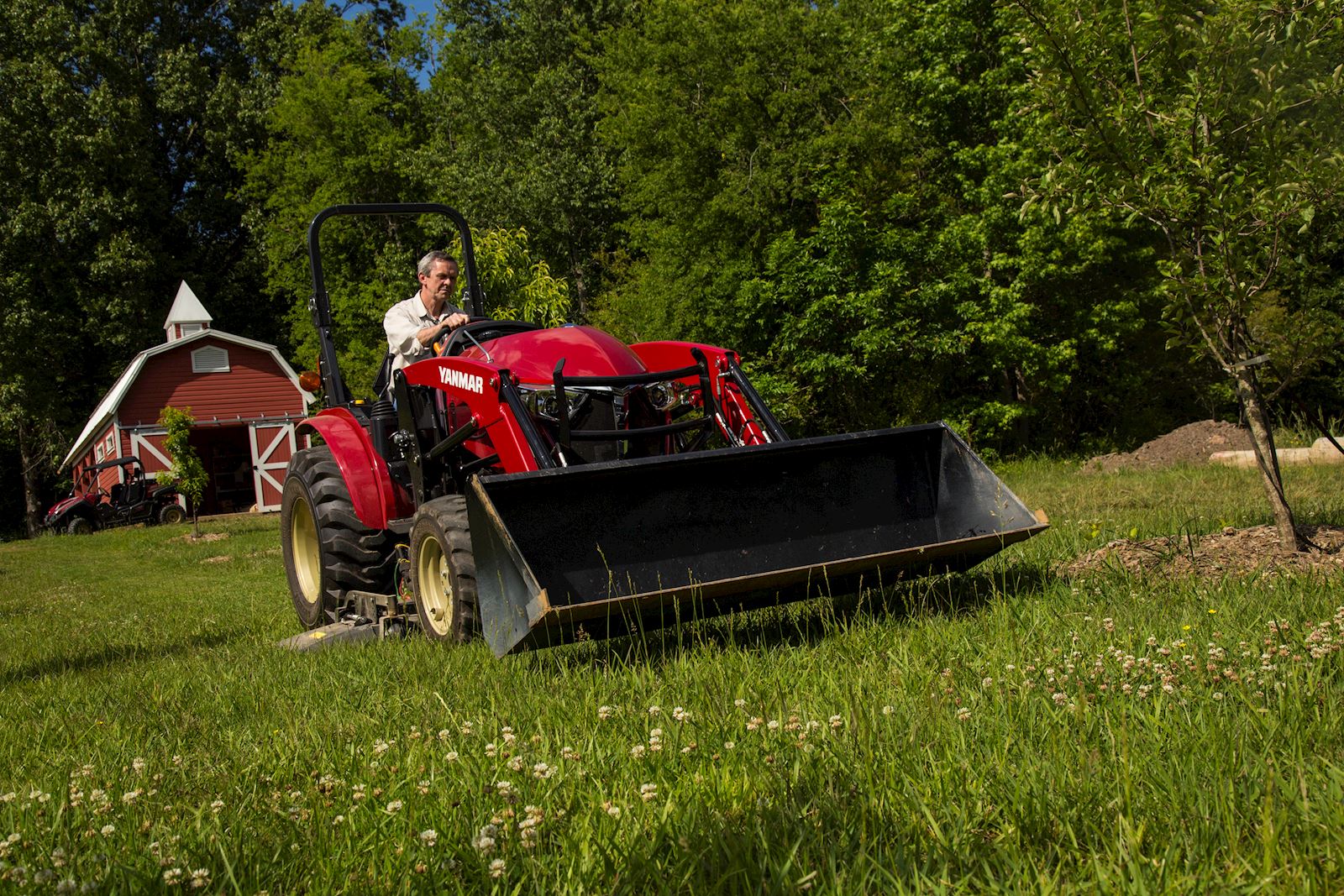Tips for Taking Your Tractor Out of Winter Storage
fundamentals
fundamentals

If your tractor doesn’t see much use during the winter months, it may require a little extra attention when spring rolls around. Since the work won’t wait, plan to get a head start on any maintenance that might be needed in advance. Just follow these simple steps when you take your tractor out of storage and you’ll hit the ground running.
Depending on how you winterized your tractor, the amount of work required to get it back in action can differ. Luckily, no matter where you land on pre-winter preparation, the process is pretty straightforward.
Weird things can happen during the winter. The first thing you want to do is give your tractor a quick visual inspection. Look for anything that might be amiss and easily recognizable like low tire pressure, leaking fluids, or disconnected components. Also take the time to open up the hood and check out the engine. This can end up saving you extra diagnostic time down the road.
It’s possible this job was already taken care of when you put your tractor in storage. If you have the benefit of a temperature-controlled barn or garage, you’re probably not shoveling out or scraping ice. No matter the level of effort involved, it’s worth starting the season with a clean slate. Removing dirt and debris from your tractor and attachments keeps everything running smoothly when the real work starts.
When you’re putting your tractor away for storage, it’s common to disconnect the battery. If not, the freezing weather can drain the power and even create cracks in the casing. Before reconnecting the battery, make sure it has enough charge by doing a quick test with a multimeter. Should the levels be low, it might need a charge prior to starting things up for the season.
Topping off fluids in anticipation of freezing weather is a good way to keep condensation from forming and finding yourself with watered-down performance. If you skipped this step in the fall, it’s essential to get a fresh start come spring. Look at the coolant, hydraulic transmission fluid, engine oil, and even the washer fluid. It might require draining and replacing them before you get back to work.
Much like it takes the body some time to get back into an exercise routine, the moving parts of a tractor need a little help getting going in the spring. An adequate application of grease will help this process and prevent friction and wear in the long-term. Look for anything that turns or moves including loader pivot points, ball joints, and hitch components.
There are many advantages to diesel fuel. It’s incredibly energy dense and delivers much better fuel economy than gasoline. On the other side of the coin, cold weather can quickly slow it down. When temperatures become too low diesel fuel gels, turning it into a waxy sludge.
Fortunately this can be resolved relatively easily. The first step is to move your tractor to a heated space. When that’s not an option, there are additives you can use to reverse the gelling effects. Cold diesel fuel can also gum up your fuel filter, so it’s always smart to keep a Yanmar maintenance kit handy for quick replacement.
Tire pressure is a significant factor in tractor performance. Tires under-inflated by just 10% below recommended levels can reduce tire life by 15%, leading to uneven wear and poor traction. Air will escape naturally over time, so It’s especially important to check on your tire pressure after months of inactivity in cold conditions. To get specific tire inflation details for your machine, consult the owner’s manual.
Once you’ve checked all the boxes above, there’s nothing left to do but start your tractor up. Before you dive right in, it’s best to let the tractor run for 15-20 minutes. This allows everything to warm up and come back to life. It’s also an opportunity to monitor for anything that seems unusual so you can feel confident putting it to the test.
With your tractor tuned up and ready to go, it’s time to get to work. As with any job, it’s a lot more efficient if you have the right tools. Here are some of the essential Yanmar attachments that will help you get the job done right:
Yanmar tractors are built for year-round reliability. They’ll stand up to the elements in any season and help you tackle the toughest jobs. Whether you already own a Yanmar or are considering buying one for the first time, our experienced dealer network is available to answer all of your questions. Find the dealer nearest you and start the conversation today!